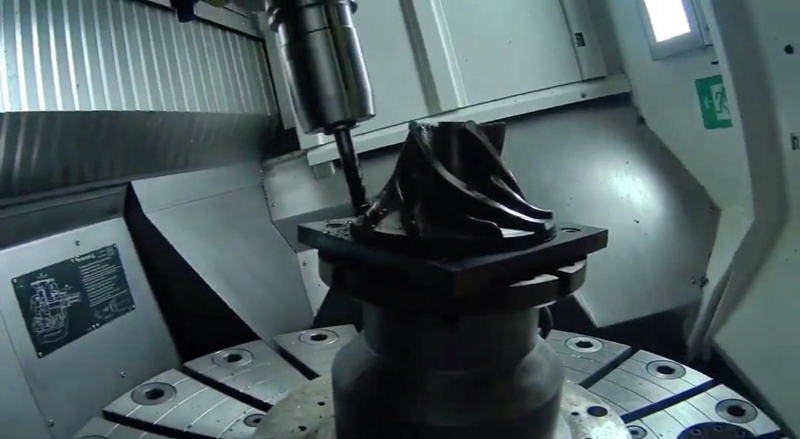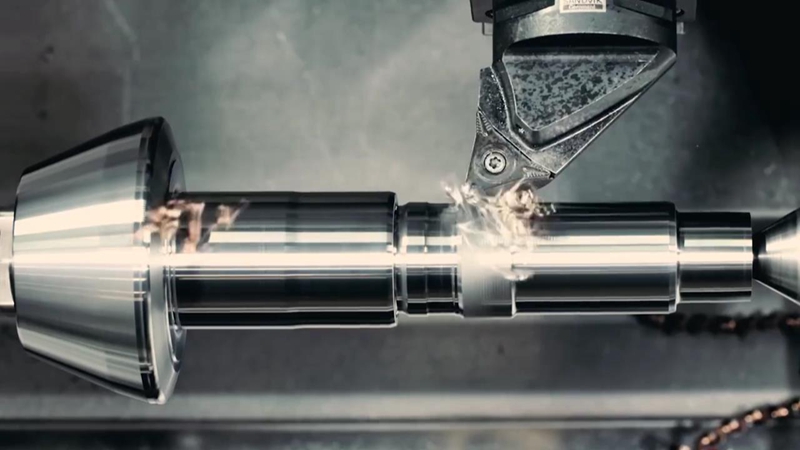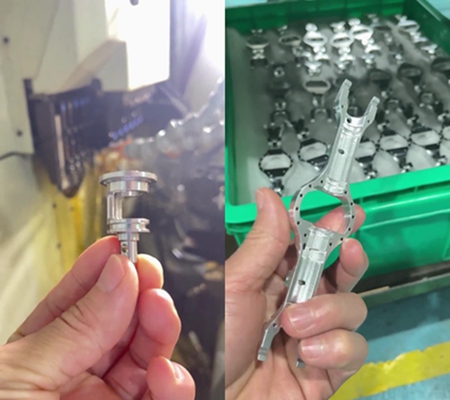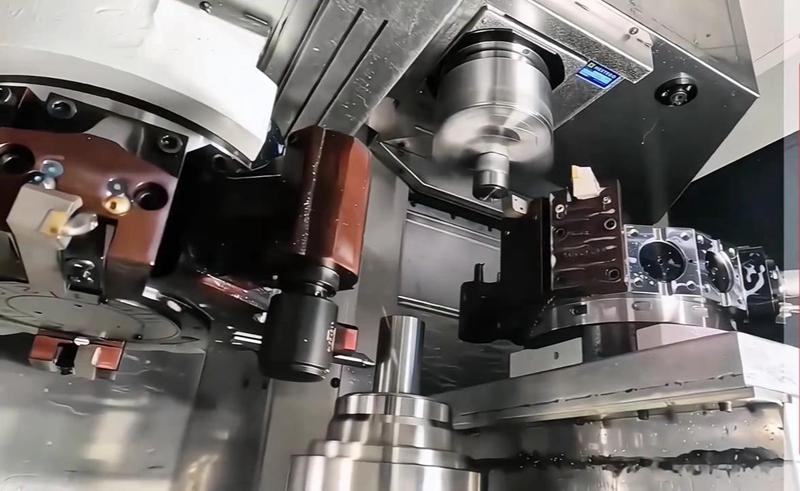CNC Milling vs CNC Turning-The Differences
May 22, 2024
CNC Milling vs CNC Turning-The Differences
Before we go on to discuss the difference between CNC milling and CNC turning, let’s define what CNC milling is. A CNC machine works towards producing a finished product through an automated process, receiving commands from a computer with pre-programmed software.
What is CNC milling?

Let’s start with milling. First, there are 3-axis CNC milling machines that are more traditional. The cutting tool can move in 3 directions – X, Y, and Z axis.
While this sets a few limits to the geometry of the parts, it is enough to complete most jobs that require milling. A wide range of milling tools can provide different cutting methods like end milling, face milling, hollow milling, etc.
5-axis milling5-axis milling
Multi-axis milling allows 4 or more axes, including the rotation of the tool and work table. This gives an extra dimension of flexibility. 5-axis milling machines are the most common of these and can create pretty much anything that can be manufactured with milling.
The dimensions of the initial block are usually larger than the general dimensions of the final part. Therefore, precision milling is possible for every side. The tolerances are very tight, so reaching a great surface finish is easily doable.
What is CNC turning?

Turning is a process in which a workpiece rotates while a cutting tool removes material from it. The cutting tool is typically a single-point, non-rotating tool that moves along the workpiece and continually removes layers of material according to the design until it matches the desired shape.
Before computers were applied to this industry, the procedure was manual and required constant supervision to achieve defined goals. Nowadays, turning is typically performed by automated machines following algorithms and numerical rules.
CNC turning can effectively produce different shapes, like cones, cylinders, disks, polygons, and sometimes even hexagons or other regular polygons. Different shapes are developed by combining numerous processes, including turning (taper or straight), external grooving, threading, knurling, boring, and drilling. While you can use many materials for turning, wood, plastic, or metal are most common.
CNC turning has many applications — from simple screws and bolts to high-precision aerospace or automotive parts.
The Difference Between CNC Turning and Milling

Put simply, the difference between CNC turning and milling is which part moves – the machine itself or the raw material. CNC milling processes involve the material being held in place while the cutting tools rotate around it. CNC turning, on the other hand, requires the tools to remain in the same place while the material is rotated at speed to create the exact shape.
There are visible differences between CNC milling and turning processes in the operational features and use of parts with complexities. Below, I have explained the differences:
Function: In the milling process, the material gets removed when the tool rotates around the workpiece. In CNC turning, the tool works on the rotating workpiece.
Parts Manufactured: With the help of CNC milling, machine shop owners manufacture geometrically complex parts. CNC turning fabricates conical and cylindrical parts like ball bearings and tubes.
Cutting Process: The tool disengages from the workpiece in CNC milling. In CNC turning, the tool is in continuous contact with the tool piece.
The tool features: CNC mills use multi-point cutting tools such as end mills, and reamers. The tool has more than two cutting edges that engage with the workpiece for the fabrication. CNC turning processes use single-point cutting tools such as fly cutters to remove the material. In CNC turning, only one point of the tool will come in contact with the workpiece.
However, keep in mind that CNC Milling is generally considered the most recommended method for producing parts with complex shapes, while CNC Turning is equally good for simpler, round shapes. Nonetheless, you can use these two processes sequentially because there may be situations where both operation processes are required.
Should You Use Turning or Milling?

which one is better for your project? Well, if your piece is axially symmetric, you’ll probably want to consider CNC turning.
As long as the base material is suitable for turning, a lathe or turning center can effectively manufacture your part to precise dimensional tolerances, even for relatively large lengths and diameters!
If your project has a more complex geometry than CNC turning can accommodate, you may want to consider CNC milling instead. Milling can produce an endless variety of shapes, and like CNC turning, can meet extremely tight tolerances.
Conclusion
While these two are often packaged under the same term – CNC machining – they are not the same. Still, they can complement each other beautifully to produce parts with high precision.





